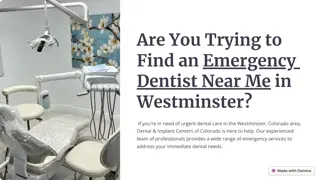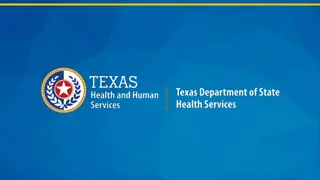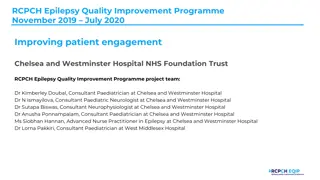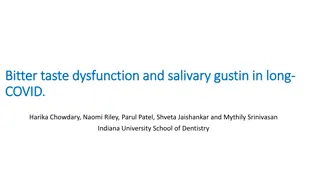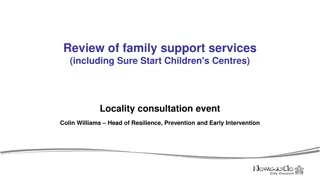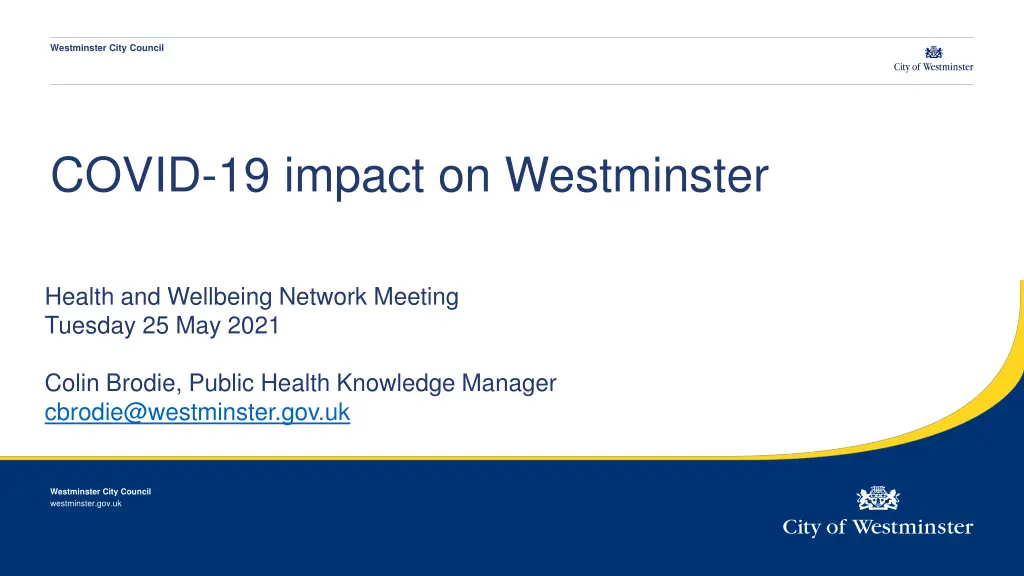
Impact of COVID-19 on Westminster Health
Explore the impact of COVID-19 on the health and well-being of Westminster residents as discussed in the Westminster City Council meeting. Learn about health disparities, demographic insights, mental health concerns, and the wider determinants of health in the Westminster borough.
Download Presentation

Please find below an Image/Link to download the presentation.
The content on the website is provided AS IS for your information and personal use only. It may not be sold, licensed, or shared on other websites without obtaining consent from the author. If you encounter any issues during the download, it is possible that the publisher has removed the file from their server.
You are allowed to download the files provided on this website for personal or commercial use, subject to the condition that they are used lawfully. All files are the property of their respective owners.
The content on the website is provided AS IS for your information and personal use only. It may not be sold, licensed, or shared on other websites without obtaining consent from the author.
E N D
Presentation Transcript
Westminster City Council COVID-19 impact on Westminster Health and Wellbeing Network Meeting Tuesday 25 May 2021 Colin Brodie, Public Health Knowledge Manager cbrodie@westminster.gov.uk Westminster City Council westminster.gov.uk
Westminster City Council Insert, Header & Footer, Date Insert, Header & Footer, Footer Health Impact Assessment to be published soon Snapshot from the first wave of the pandemic Draws on both national and local research and data Chapters include: Health and wellbeing Protected characteristics Wider determinants of health Inclusion health Healthy lifestyle
Westminster City Council Key messages COVID-19 has impacted everyone The pandemic has had both direct and indirect impacts on the health and wellbeing of residents Certain groups have been disproportionately impacted by the pandemic Health inequalities existed before COVID-19 Recovery needs to build on what we know works to address health inequalities through tackling the wider determinants of health
Westminster City Council Insert, Header & Footer, Date Health and Wellbeing in Westminster Child health Demographics General Health & Wellbeing 87% of people in Westminster think they are in good health according to the City Survey 2018/19 which is a 3% increase from 2016/17. Westminster remains below the London average for Obesity at Reception level (21.2% of children classed as obese or overweight, London: 21.6%). However there have been high levels of obesity of Children in year 6. (41% of children classed as obese or overweight, London: 38.2%) There is a high % of children with one or more decayed, missing or filled teeth (30.3%, England: 23.3%). The population of Westminster is 259,981, consisting of 135,458 men, 124,523 women and 105,772 households. Westminster is an ethnically diverse borough. Other than English, the main languages spoken in our borough are Arabic (6%), French (3%). Spanish (2%), Italian (2%)and Portuguese (2%) Wider Determinants of Health There have been 2,757 rough sleepers in 2019/20 which is 10% higher than 2018/19, of which 64% were seen as new rough sleepers. The unemployment rate is 4.3%,with 759,000 jobs and a median household income of 47,510. Mental health and wellbeing
Westminster City Council Background Life expectancy is one of the key measures of health inequalities. Many of our residents live long lives, with some of the longest life expectancy in the country. However, there is also significant variation in life expectancy within the borough. This map shows that as you travel across Westminster, the life expectancy for residents fluctuates, depending on where you live. This reflects the variation in health between the most and least deprived parts of our boroughs. Health inequalities existed before COVID-19 . For example, the life expectancy of a baby born in Queen s Park is 78.2 years, compared to a baby boy born in Abbey Road where life expectancy is 86.8 years . COVID-19 has exposed and exacerbated existing inequalities. Source: Public Health England (PHE) Fingertips, 2013-17
Westminster City Council How has COVID19 impacted on health and wellbeing? COVID-19 has impacted all aspects of life. The table below highlights some of these impacts and the initial horizon scanning which informed the scoped of the analysis.
Westminster City Council Insert, Header & Footer, Date Insert, Header & Footer, Footer What does the Health Impact Assessment tell us? Health and wellbeing Cancer screening services were paused across England and urgent referrals to services dropped, People with conditions such as diabetes or respiratory disease more at risk from COVID19. Local prevalence of diabetes and COPD is lower than the London and England average but varies by ward and ethnicity COVID19 has impacted mental health and wellbeing, with Westminster already having a higher prevalence of common mental health disorders in 16+ year olds (18.7%) and over 65s (11.6%) than the England average (16.9% and 10.2% respectively). For 65+ year olds this is also higher than the London average (11.3%). Inclusion health Homeless people are more at risk from COVID-19 and have a lack of access to basic facilities that would enable them to reduce their risk e.g. by self-isolating or washing their hands There has been an impact on carers mental health and wellbeing, and they are at risk of burnout and increased sense of isolation There could be an increased risk among people who use drugs due to higher levels of comorbidity. Sharing drug using equipment may also increase the risk of infection Internationally, refugees and vulnerable migrants could be at heightened risk of adverse impacts from COVID-19 and lockdown measures due to their ethnicity, pre-existing conditions, poor mental health and wellbeing, lack of knowledge of the healthcare system and support networks, language barriers, and lack of access to technology Wider determinants The number of people claiming out-of-work benefits from January to August 2020 more than doubled in Westminster from 3785 to 9905. Young people aged under 25, women, and low earners are more likely to work in sectors most affected by lockdowns Risk of homelessness is likely to increase nationally due economic downturn following the pandemic due job losses, financial insecurity, rising personal debt levels There has been an increase in demand for domestic abuse services Local analysis indicates an increase in the percentage of deaths in the most deprived areas during the first wave, compared to the previous year. Protected characteristics Local analysis has supported national research that older people and men are more at risk of dying from COVID-19. 85% of residents who sadly died were aged 65+ and 60% were men. Similarly, initial analysis supports national evidence there has been a higher rate of deaths among people who identify themselves as being from a Black, Asian or minority ethnic background. There is potential for a significant longer-term impact on children and young people with disruption to education and disproportionate impact of unemployment on young people Nationally, disabled adults were more likely to report being very worried about the effects of COVID19 than non- disabled adults in the early part of lockdown. Healthy lifestyles Many smokers across the country have taken the opportunity to reduce or quit during lockdown. Prior to the pandemic the borough had the 5th highest smoking quit rates in the country Nationally, lockdown has had a negative impact on health behaviour such as diet. Obesity prevalence, which we know nationally is higher in deprived areas, may be impacted. National research suggested people were walking and cycling further during lockdown. However, locally, people reported not going out at all and not letting children out, with physical activity dropping completely for many residents
Westminster City Council Insert, Header & Footer, Date Insert, Header & Footer, Footer Key messages and commitments from HIA Committments 1. Focus attention on areas and communities with the greatest needs. 2. Ask residents about their health and wellbeing to direct our efforts. 3. Innovate by codesigning campaigns and actions to bring us closer to the communities we serve. 4. New investment in transformational programmes to address health inequalities Key messages COVID-19 has impacted everyone The pandemic has had both direct and indirect impacts on the health and wellbeing of residents Certain groups have been disproportionately impacted by the pandemic Health inequalities existed before COVID-19 Recovery needs to build on what we know works to address health inequalities through tackling the wider determinants of health
Westminster City Council Insert, Header & Footer, Date Insert, Header & Footer, Footer Any questions? 1. Do the findings sense-check with what you have seen in the community? 2. What do you think are priorities for health and wellbeing as we go forward into recovery? 3. How can we work with you to understand more about the impact of COVID-19 on residents and communities in Westminster, and how best to co-design the solutions?
Westminster City Council Insert, Header & Footer, Date Insert, Header & Footer, Footer Thank you! Colin Brodie Public Health Knowledge Manager cbrodie@westminster.gov.uk




